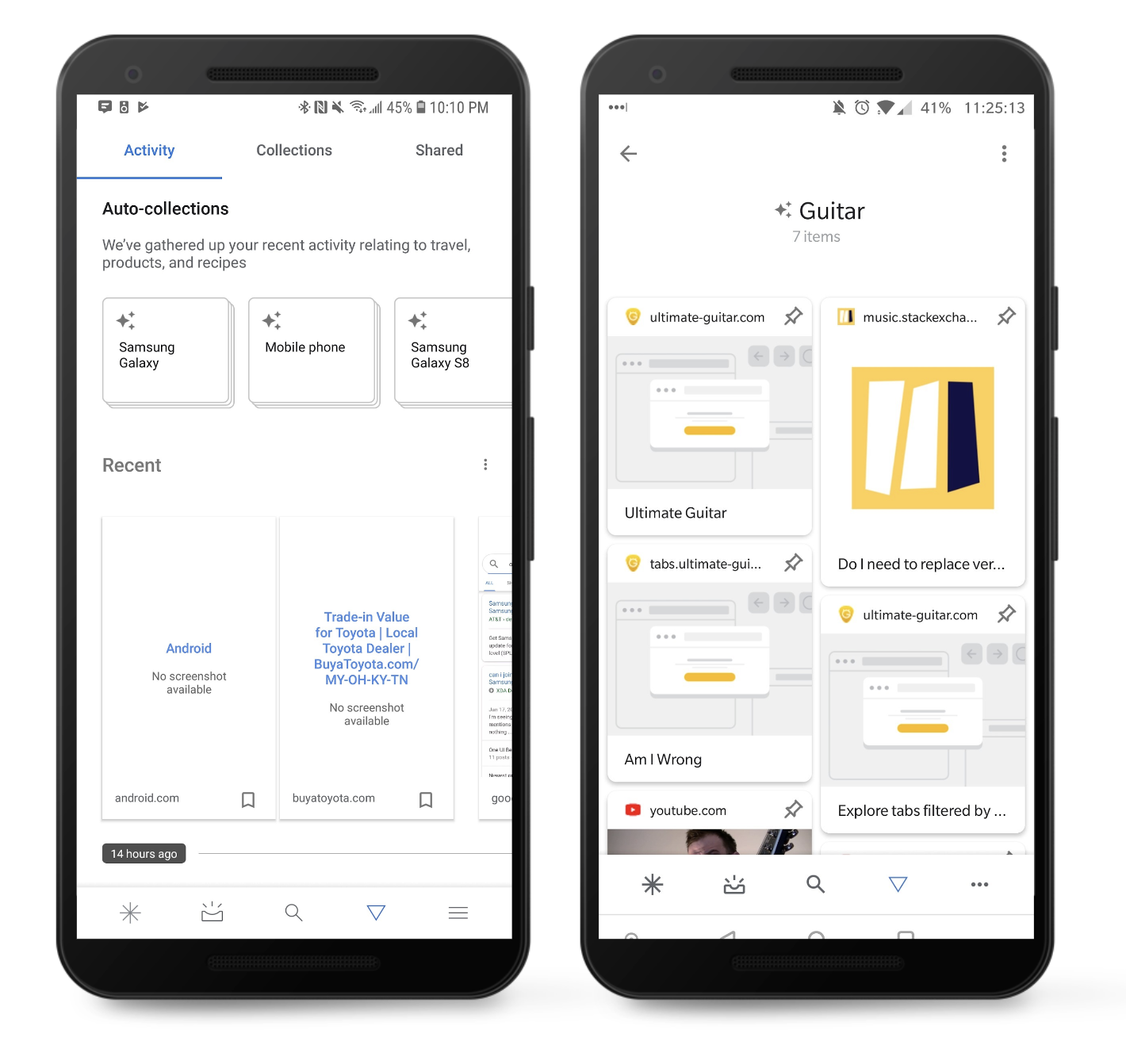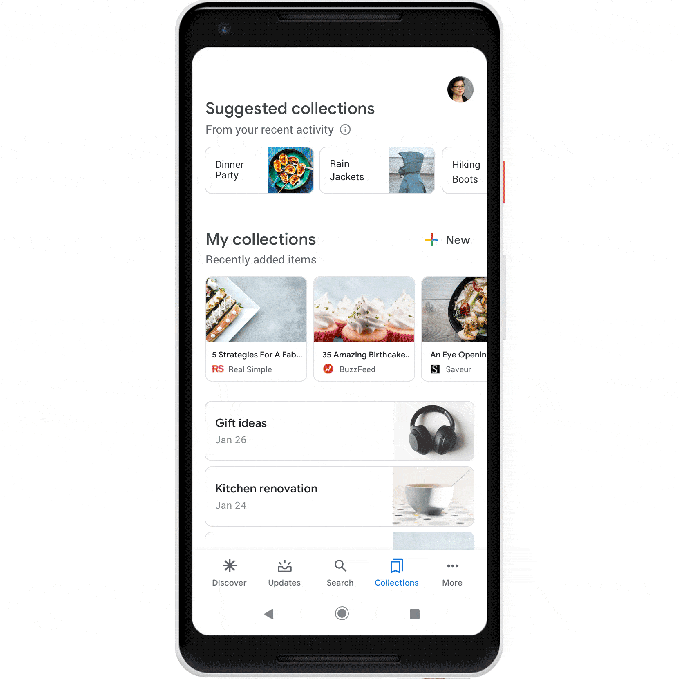
Launching Google Search’s AI-powered Collections
-
Business Context
The Search team saught to validate, improve and launch its first AI-powered product—one that creates collections that help users continue their long-running search journeys.
Research Questions

Methods
We opted for diary studies and in-depth interviews to understand how participants used our Collections prototype across sessions and how it could be improved.
-
We installed the prototype app on participants' phones so they could use it completely naturally. To minimize the risk of leaks and attrition, we conducted on-boarding sessions to install the app.
-
We ran a 10-day dscout diary for each participant, asking them to choose a current long running journey and use collections to help with it.
-
We chose the best diary participants to sit in 60 minute interview sessions covering what worked, what didn't and what could be improved.
Starting Prototype
Findings
Who else?
Participants expressed strong desires to collaborate with other people on their collections, whether those collections were machine generated or not. This was by far the most persistent and pressing finding.
Only a little creepy.
While AI-generated collections unnerved some participants who disliked the idea of their browsing being monitored and fed back to them, most participant recognized and appreciated the time-savings saying it was a good trade off—not creepy—as long as the collections were framed as suggestions to be approved or modified by the user.
Suggestions please.
What collections tab?
Participants reported hitting a wall when filling out their collections. They requested a page within each collection that uses Google’s search algorithm to serve up related items that the collection might benefit from including.
The prototype suffered from discoverability issues, as the participants struggled to find and understand the collections tab/icon without nudging from the researcher.
Ending Prototype
Impact

